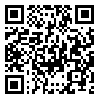Volume 14, Issue 1 (January & February 2023)
BCN 2023, 14(1): 129-136 |
Back to browse issues page
Download citation:
BibTeX | RIS | EndNote | Medlars | ProCite | Reference Manager | RefWorks
Send citation to:



BibTeX | RIS | EndNote | Medlars | ProCite | Reference Manager | RefWorks
Send citation to:
Moghadas Tabrizi Y, Yavari Kateb M, Shahrbanian S. Enhancement of Visuospatial Working Memory by Transcranial Direct Current Stimulation on Prefrontal and Parietal Cortices. BCN 2023; 14 (1) :129-136
URL: http://bcn.iums.ac.ir/article-1-2117-en.html
URL: http://bcn.iums.ac.ir/article-1-2117-en.html
1- Department of Sport Pathology and Corrective Exercises, Faculty of Sports and Health Sciences, University of Tehran, Tehran, Iran.
2- Department of Behavioral and Cognitive Sports Sciences, Faculty of Sports and Health Sciences, University of Tehran, Tehran, Iran.
3- Department of Sports Science, Faculty of Humanities, Tarbiat Modares University, Tehran, Iran.
2- Department of Behavioral and Cognitive Sports Sciences, Faculty of Sports and Health Sciences, University of Tehran, Tehran, Iran.
3- Department of Sports Science, Faculty of Humanities, Tarbiat Modares University, Tehran, Iran.
Abstract:
Introduction: Previous studies have reported dorsolateral prefrontal cortex (DLPFC) and posterior parietal cortex (PPC) activation during the performance of spatial working memory (SWM), therefore this study aims to compare the effect of transcranial direct current stimulation (tDCS) between these two areas.
Methods: Fifty-four healthy right-handed students (27 women, 27 men; age=24.3±0.2 years) were randomly assigned to an anodal group (n=27) and a sham group (n=27), each of these groups was divided into F4 (representing right DLPFC) or P4 (representing right PPC) subgroups, respectively. A computerized Corsi block tapping (CBT) task was used to measure SWM. The tDCS intervention consisted of five daily sessions with a direct current of 1.5 mA for 15 minutes on the F4 or P4 area of the brain at 24-hour intervals.
Results: Significant enhancement of the SWM span as well as a faster response was observed after anodal tDCS in both the anterior and posterior direction. Moreover, stimulation of the left DLPFC induced a faster reaction time compared to the right PPC.
Conclusion: Stimulation DLPFC and PPC, as an element of the frontoparietal network, showed SWM enhancement, with the DLPFC being more affected. Our finding provides new evidence to compare the effect of stimulation on the two main activated cortical areas during visual SWM.
Methods: Fifty-four healthy right-handed students (27 women, 27 men; age=24.3±0.2 years) were randomly assigned to an anodal group (n=27) and a sham group (n=27), each of these groups was divided into F4 (representing right DLPFC) or P4 (representing right PPC) subgroups, respectively. A computerized Corsi block tapping (CBT) task was used to measure SWM. The tDCS intervention consisted of five daily sessions with a direct current of 1.5 mA for 15 minutes on the F4 or P4 area of the brain at 24-hour intervals.
Results: Significant enhancement of the SWM span as well as a faster response was observed after anodal tDCS in both the anterior and posterior direction. Moreover, stimulation of the left DLPFC induced a faster reaction time compared to the right PPC.
Conclusion: Stimulation DLPFC and PPC, as an element of the frontoparietal network, showed SWM enhancement, with the DLPFC being more affected. Our finding provides new evidence to compare the effect of stimulation on the two main activated cortical areas during visual SWM.
Keywords: Spatial working memory, Transcranial direct current stimulation (tDCS), computerized Corsi block tapping (CBT) task
Type of Study: Original |
Subject:
Cognitive Neuroscience
Received: 2021/03/8 | Accepted: 2021/09/11 | Published: 2023/01/1
Received: 2021/03/8 | Accepted: 2021/09/11 | Published: 2023/01/1
Send email to the article author
| Rights and permissions | |
 |
This work is licensed under a Creative Commons Attribution-NonCommercial 4.0 International License. |








